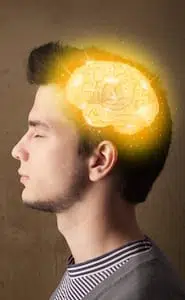Table of Contents
At the I/O 2018 conference last month, in an impressive display of the power of AI, Google demonstrated its Duplex technology prompting many people to question if they had finally passed the Turing Test. In very realistic-sounding conversations, including typical speech disfluencies, Google Assistant was able to book a haircut appointment and make a dinner reservation. Seeing this tech made me think of how STEM creativity plays out in actuality.
While this is a remarkable achievement in itself, it falls short of the Turing test which expects a human observing a general, free-flowing conversation between a machine and another human not be able to distinguish between the two. Google’s current technology is heavily trained in specific domains to handle constrained tasks. It cannot engage in more general conversations and therefore, doesn’t meet the Turing test bar.
What Kind of Jobs are AI Proof?
What is more clear is that advancements in AI and other kinds of automation will most certainly make some jobs obsolete. Tasks that involve linear and logical thinking, with plenty of data to train, are prime scenarios for automation. A recent report by McKinsey estimates that by 2030, one-third of the workforce in the US may need to find work in new occupations, a transition that will be very challenging.
So, what kinds of jobs are safe in this age of automation?
Jobs that will thrive in the new economy are those that rely on human skills that machines can’t emulate. As Satya Nadella points out in his book, Hit Refresh, the skills that future generations must prioritize and cultivate are empathy and creativity.
Why STEM Creativity?
Of the two, Creativity, especially in the STEM areas, will be the bigger driver of economic growth. Economist, Paul Romer, succinctly captured the importance of creativity to growth when he said, “Human history teaches us, however, that economic growth springs from better recipes, not just from more cooking.”
Creativity isn’t about arts and crafts, as is often thought. Creativity, as psychologists define it, is the ability to come up with ideas that are both original and useful. And the holy grail in computational creativity isn’t the Turing test. It’s the more complex ability of creating an artifact that can be deemed as creative as what a human would produce. It turns out that this is very difficult to accomplish for a few reasons.
Originality Implies Lack of Prior Data
 A solution can’t be creative unless it’s also original, which by definition means that there aren’t any existing examples of such a solution. Lack of prior data also means that current machine learning algorithms, that rely on vast amounts of existing data to learn, can’t be adapted for creative work.
A solution can’t be creative unless it’s also original, which by definition means that there aren’t any existing examples of such a solution. Lack of prior data also means that current machine learning algorithms, that rely on vast amounts of existing data to learn, can’t be adapted for creative work.
Even the principle of 10,000 hours of practice, that works great for learning a new domain, doesn’t really work when you have to create original work. As Prof. Scott Barry Kaufman, explains, “For most creative domains, the goals and ways of achieving success are constantly changing, and consistently replicable behaviors are in fact detrimental to success. While Kobe Bryant showcasing the same slam dunk and Tiger Woods getting a hole in one will reliably induce public applause, scientists can’t keep publishing the same paper over and over again, and writers can’t keep writing the same critically acclaimed novel over and over again and expect the same acclaim.”
We Don’t Really Understand Creativity
Most of us can determine whether a product is creative or not, but we don’t really know how someone comes up with a creative idea. While we have some clues about underlying cognitive processes like associative thinking, we don’t fully understand how the brain really works in the creative mode.
Most creative thinking techniques involve providing the right kinds of triggers and stimuli, so that the brain can (somewhat reliably) produce new ideas. But how the brain processes the stimuli remains a black box mystery.
Unless we get a better understanding of how our brain extracts information, constructs meaning, explores and prunes ideas; it will be very hard to build the next generation of cognitive architectures that will allow a machine to take on creative work.
Even Computationally Evaluating Creativity is Hard
 For AI to evaluate whether something fits the criteria of being creative – it needs to determine if the artifact is both original and useful. Evaluating originality is easier and can be accomplished using existing machine learning algorithms.
For AI to evaluate whether something fits the criteria of being creative – it needs to determine if the artifact is both original and useful. Evaluating originality is easier and can be accomplished using existing machine learning algorithms.
However, evaluating if something is useful or not is much harder. The human judgment and reasoning behind it are hard to do computationally.
Creativity and AI expert Margaret Boden talks about three kinds of creativity – combinational, which arises from combining two unrelated ideas; exploratory, which generates ideas by exploring structured conceptual spaces like creating a new artwork in the cubist style; and transformational, which involves the transformation of some dimension of the conceptual space.
The challenge with the transformational type of creativity, which often leads to breakthrough ideas, is that it is also exceptionally hard to validate computationally. As Boden summarizes, “Only a few AI-models can critically judge their own original ideas, and hardly any can combine evaluation with transformation.”
So, if we want to be successful in the coming years, we have to start building our creative thinking abilities. And in the meantime, perhaps the best way to thwart the Turing test is to pose a creative thinking challenge and look for signs of originality and judgment.



